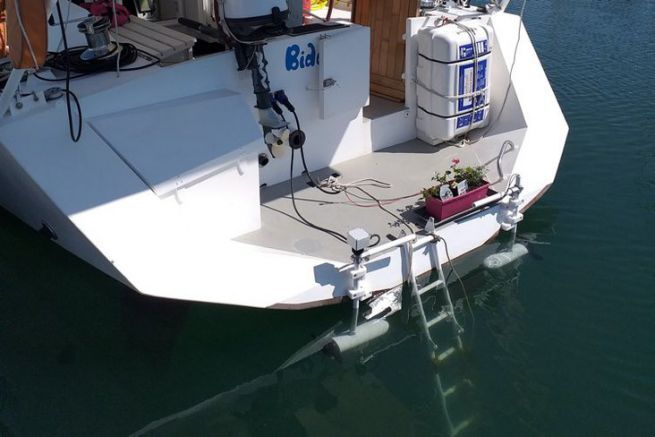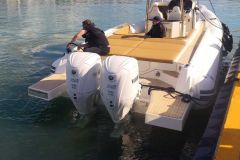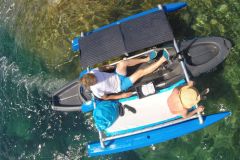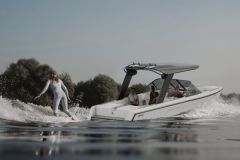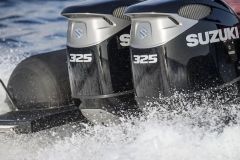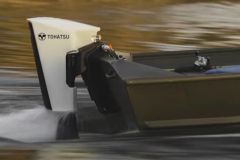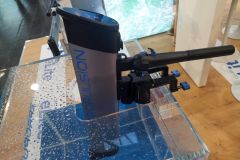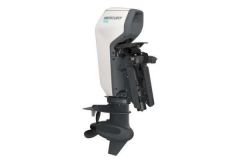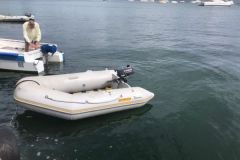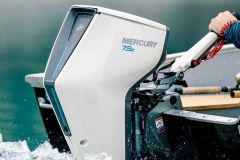Michel bought a 14 m steel sailboat last year. It is a Jean-François André design built by an amateur. This dinghy with an embryo keel (1.35 m draft, high drift) weighs 15 tons. With its shaft-line engine and 2 rudders, manoeuvring with the engine, especially in reverse, is not easy. The flow of the propeller, a four-bladed one, passes between the 2 rudders.
Sailing with his wife, Michel imagined equipping his sailboat with a bow thruster. He plans to weld a tunnel at the bow. But the prohibitive cost of the installation and the complexity of the whole project quickly dampened his enthusiasm.
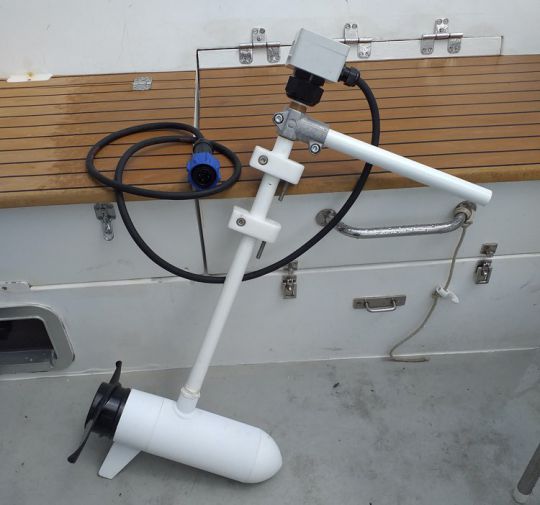
A bow thruster palliative
Looking for a solution, he has the idea to help himself with the outboard motor of his tender. He makes a first provisional assembly by fixing it on his rear skirt. He realizes that drifting low, the boat pivots well around this central axis, just driven by the outboard. This would therefore be the solution, but it requires having one person in the skirt at all times during the harbour manoeuvre to pilot the outboard under the helmsman's orders. He is therefore looking for a more durable solution.
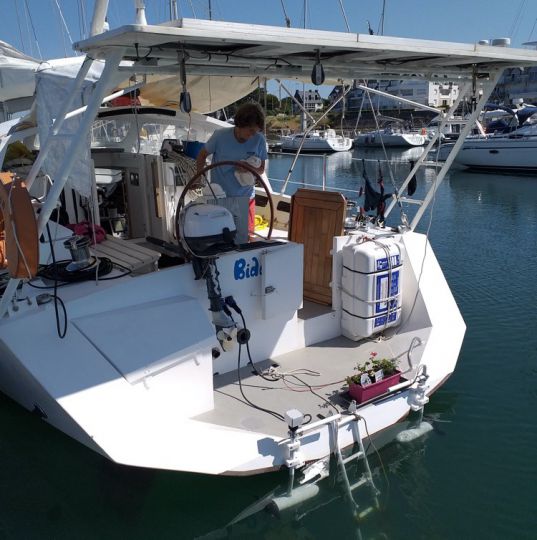
Two electric pods
He finds out that electric motors aren't too expensive. He therefore looked into motors often used on fishing boats of the Minn Kota brand (distributed in France by Navicom). He will therefore opt for 2 engines of 1 kW each. Each engine being installed on each side of the skirt and facing each other. As a result the propeller thrust of one or the other engine is always maximum (in forward thrust and stronger than in reverse, propeller is designed to work in this direction of rotation).
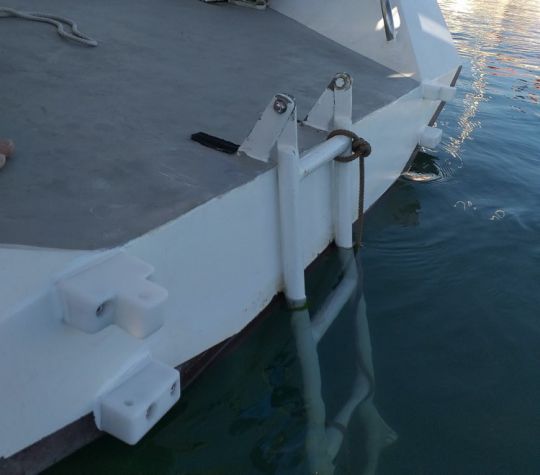
Homemade femelos
Of course, there is no question of sailing with these engines installed across the road. The 2 pods are only attached to the stern for the time of the harbour manoeuvre. To do this, Michel has cut Delrin pieces, a kind of femelo, in which the engines come to take place. The propellers are not deep, just below the surface of the water.
For the electrical connection, Michel (whose job it is) has a little tinkered. The 2 engines are connected to each other and are controlled with a switch installed near the helm. He had thought of a dimmer system, but realized that it was useless. So he simplified it with a simple on/off button. As soon as they are switched on, the motors are at full power, one pushing, the other pulling (forward and reverse).
24 V power supply
These motors are supplied with 24 V. Rather than creating a special battery park (the boat is powered in 12 V), Michel chose to install a generator. This one produces 220 V which it converts into 24 V (via a converter powerful enough to support the 2 kW of the 2 engines). This generator is used in addition for all the electrical needs of the ship.
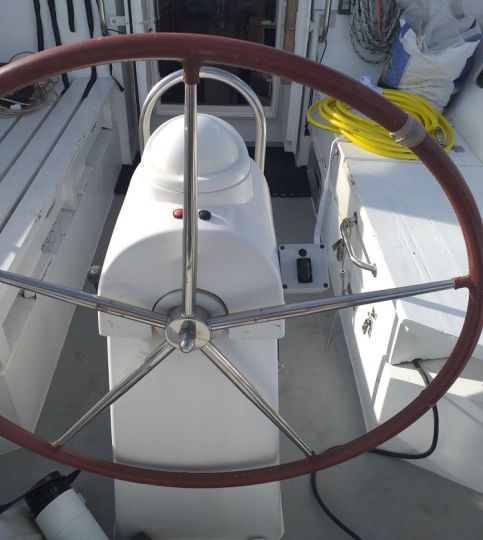
Easy manoeuvring
This system works very well. Now Michel and his wife are no longer anxious about engine manoeuvres. Admittedly, by being installed at the stern, the thrust of the engines is counteracted by the rudders (which make an anti-drift plane). A bow installation would be more efficient, but also much more complicated. The transom under the transom skirt is just flush with the water.
To be functional, the pods are installed at the entrance of the port. They quickly connect to two sockets on the transom.
A long way from the price of a propellant..
In terms of budget, the complete installation cost Michel about 1,500 euros. Each electric motor cost 500 euros each plus about 500 euros for their power supply. Of course, Michel's electrical skills made the installation easier, but the final budget is much lower than that of a tunnel thruster.
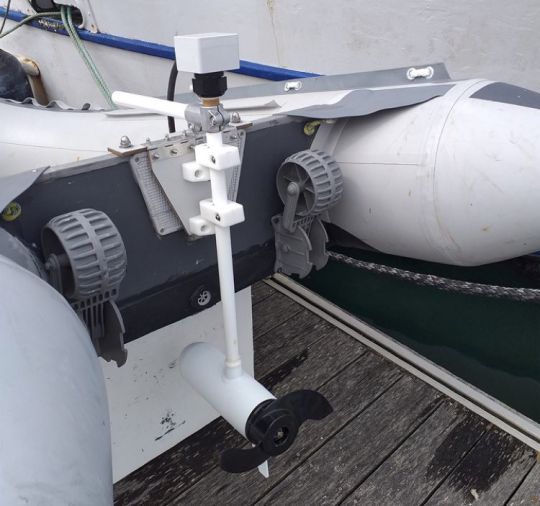
The little extra
Michel also plans to use one of the engines for his tender. By embarking a small 24 V battery, he can use it to disembark silently. In this case, the motor uses the same femelos as on the transom of the sailboat. No adaptation is required. The electric pod fits on the dinghy as well as on the sailboat.
